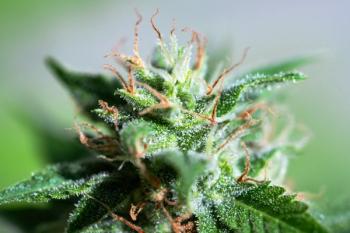
Cannabis Science and Technology
- September/October 2019
- Volume 2
- Issue 5
Using Gas Chromatography for Accurate Terpene Analysis in Cannabis
An in depth look at the process behind terpene analysis in medical marijuana
This article takes an in depth look at the process behind terpene analysis in medical marijuana. It assesses why terpene analysis is essential for quality control and safety standards within the industry. In the U.S., the Food and Drug Administration (FDA) is normally at the forefront of ensuring consumer safety, but they are effectively restricted from completing effective drug trials because the Drug Enforcement Administration’s (DEA) official position means they cannot provide illegal substances for testing. As such, this article looks at the wider implications for the cannabis industry on the lack of standardized testing and legislation and how the onus is currently on laboratories and producers to self-test using gas chromatography.
Terpene analysis or flavor profiling is an often overlooked aspect of cannabis testing in both medicinal and recreational cannabis and yet it is an essential part of providing quality and safety assurance. Terpenes are found in more than 2000 varieties of plant, flower, tree, and other vegetation, including cannabis. There is growing evidence that the terpenes found in cannabis products play a role in the way tetrahydrocannabinol (THC) and cannabidiol (CBD) act on the endocannabinoid system when consumed for medicinal purposes. This impacts the effectiveness of the product in delivering medicinal results such as pain relief.
The “entourage effect” is an area of growing interest in cannabis analysis that is especially pertinent to growers, producers, and users who are interested in the terpene qualities of a strain of plant. The theory states that cannabinoids and terpenes found in the cannabis plant work together to produce an effect markedly different from that of pure THC. This is how whole-plant medicine is different from pharmaceutical THC (1).
Medicinal users may find the entourage effect of certain terpene profiles beneficial for their conditions, so terpene profiles may help them identify more suitable products more effectively than simply looking at the THC:CBD ratio. This is important because studies into the entourage effect suggest that selective breeding of cannabis chemotypes rich in ameliorative phytocannabinoid and terpenoid content can complement pharmacological applications. This, in turn, could have an impact on the current clinical applications of cannabis, with terpene analysis playing a leading role in this development (2).
For companies that buy-in plant material or extracts, accurate terpene analysis allows for greater quality control of these incoming materials, giving confirmation that the plant material or extract has been harvested or dried correctly, or that it is from the specified strain. Studies have found that the relative content of terpenoids is strongly inherited within a specific strain, while total yield per weight of tissue is dependent on environmental factors (such as light and heat). This matters because the wide variety of terpene composition within different strains provides potential insights into the characterization of cannabis biotypes. For growers, this warrants further research to evaluate the drug’s medicinal value (3).
For growers, terpene analysis plays a key role in the harvesting of specific strains of cannabis. As the plant grows, terpene levels change and monitoring this can be used to predict the optimum time to harvest. Growers can also use terpene analysis for strain identification and quality control. However, this raises challenges for the growing industry because outsourced analysis can take weeks to provide a result, meaning the harvesting conditions will have long since changed. This can be combatted by bringing testing in-house and using techniques such as gas chromatography (GC), which provides rapid and accurate results.
Using GC for Terpene Analysis
Whilst cannabinoid analysis is commonly performed by both GC and high performance liquid chromatography (HPLC), the volatility of terpenes makes GC a much more suitable tool for the analysis. The ability to quickly and accurately profile both the cannabinoid and terpene compounds present with a single instrument helps to inform growers, producers, and consumers, which, in turn, will bring further legitimacy to the industry through more stringent, standardized testing practices.
The traditional method for analyzing terpenes is through gas chromatography with a flame ionization detector (GC-FID). In this method, the first step is to prepare a solvent-based extraction, usually by placing cannabis plant material in some form of liquid solvent (commonly methanol or ethanol) to extract the compounds of interest into the solvent. This extraction liquid is then injected into the gas chromatography apparatus, where the cannabinoids and terpenes in the solvent extraction are separated as they move through the gas chromatograph.
Finally, the separated compounds exit the column and reach the flame ionization detector, where they are burnt over a hot hydrogen-air flame to produce organic ions. Electrodes present in the FID then measure the current from the ions which, when taken with the retention time of the compound in the gas chromatograph, can be used to identify and quantify terpene analysis (4).
Terpene and Potency in a Single Analysis
For internal quality, carrying out a potency and terpene test in a single analysis can save time and money. The concentration and profile of the terpenes present provide information to guide users about the sort of flavor characteristics that can be expected from the cannabis when consumed. For example, a strain that shows high levels of limonene is likely to have a citrus lemony aroma or a high level of myrcene will give flavors similar to beer (myrcene is also commonly found in hops). GC provides the option to carry out dual potency and terpene analysis on a single sample.
In a potency and terpene analysis carried out by Dutch firm, Shamanics, it was able to accurately analyze the different properties of a specific cannabis strain using GC in a single experiment. Figure 1 shows the concentration and profile of the terpenes and cannabinoids in a sample used to establish cannabinoid potency, flavor profile, and strength.
Experimental Conditions
The GC was first calibrated using a standard three component cannabinoid mix (Restek Cat.# 34014: Cannabinoids Standard [three components]) and a 19 component terpene mix (Restek Cat.# 34095: Medicinal Cannabis Terpenes Standard #1 [19 components]).
First, 0.1 g of cannabis was added to 30 mL of methanol at ambient, shaken for 30 s and left to extract for 30 min. An aliquot of the extractant liquid was collected through a syringe filter and placed in a sample vial for analysis. The analysis was performed using a 200 Series GC with an FID (Ellutia) and a 30 m 0.25 x 0.25 EL-5 column. The results show that this sample has 601.226 μg/L of THC which represents a total THC content of 18%. (Table I).
Figure 2 shows high levels of THC that were detected in the experiment indicating this sample would have more of a psychoactive effect if consumed. The results show the ratios of THC and CBD, providing information about the potency of the product.
Figure 3 shows the concentration and profile of the terpenes present in this sample as measured using the GC. The researchers are now able to use this information to determine the flavor profile of this strand. This allows them to properly label the product and provide users with a guide about the sort of flavor characteristics that can be expected from the cannabis when consumed (Figure 3).
The Future of Terpene Analysis
Understanding which terpenes are present in a particular strain of cannabis is essential for understanding and accurately prescribing medicinal cannabis to provide safe and effective medicinal products to patients. GC testing allows companies to effectively carry out terpene and potency testing, giving a greater understanding of the properties and quality of a particular strain. Consumers are also becoming more informed about the different strains of cannabis available and the entourage effect’s impact on the effectiveness of treatment as well as flavor profiles for recreational users, creating greater demand for this information to be available.
While the technology exists for accurate testing to take place, the onus of quality assurance falls on the grower, manufacturer, and often the customer. It is clear that the demand for cannabis testing will continue to grow as further legislative changes occur globally. Terpene analysis covers just a small part of the range of testing needed to ensure medicinal cannabis products are safe and of high quality. Until proper legislation is in place that is monitored and enforced, the potential for inconsistency in the accuracy of testing and labelling of cannabis for medicinal use will continue.
References:
- Chernoloz, The Growth Op March 2019,
https://www.thegrowthop.com/cannabis-health/opinion-113-does-the-entourage-effect-theory-hold-water . - E.B. Russo, Br. J. Pharmacol.163(7), 1344–1364 (2011).
https://www.ncbi.nlm.nih.gov/pmc/articles/PMC3165946/ . - S. Casano, G. Grassi, V. Martini, and M. Michelozzi, “Variations in Terpene Profiles of Different Strains of Cannabis sativa L,” (2011)
https://www.fundacion-canna.es/en/variations-terpene-profiles-different-strains-cannabis-sativa-l . - A. Beadle, Analytical Cannabis February 2019,
https://www.analyticalcannabis.com/articles/how-are-developments-in-terpene-analysis-shaping-the-cannabis-industry-311499 .
Andrew James is the marketing director at Ellutia. James has worked at Ellutia for more than 20 years, during that time he has been involved with many aspects of the business from product development to strategic planning. Through this wide range involvement, he has developed an extensive wealth of knowledge and experience in the chromatography industry. James has been in charge of the company’s marketing for the last eight years, working to continually grow both the Ellutia brand and company as a whole. Direct correspondence to:
How to Cite This Article
A. James, Cannabis Science and Technology2(5), 48-51 (2019).
Articles in this issue
about 6 years ago
Quality Control in the World of Cannabisabout 6 years ago
Hemp Testing Insanityabout 6 years ago
Medical Cannabis for Analgesia: Growth and Developmentabout 6 years ago
Is Your Cannabis Testing Laboratory Ready for ISO/IEC 17025:2017?Newsletter
Unlock the latest breakthroughs in cannabis science—subscribe now to get expert insights, research, and industry updates delivered to your inbox.





